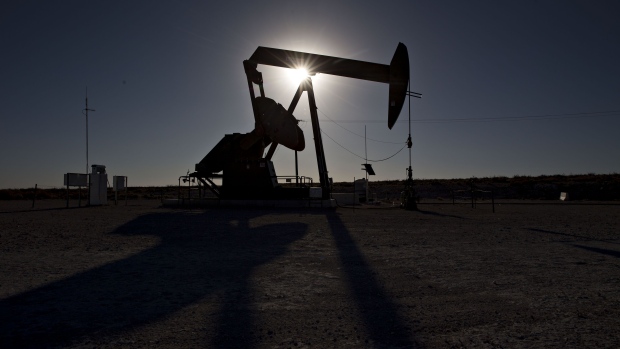Feb 5, 2021
Oil climbs within sight of US$60 with global supplies tightening
, Bloomberg News

Oil rose toward US$60 a barrel in London as global supplies tighten while the demand outlook improves with the roll-out of coronavirus vaccines.
Brent climbed for a sixth day, pushing to its highest intraday level since February 2020, before coming off session highs as broader markets pare gains. Crude stockpiles tied to oil futures in China fell to the lowest since June 2020, according to data analytics company OilX, the latest sign of ebbing inventories in the world’s largest importer.
The recent rally is being backed by a surge of interest in commodities. The Organization of Petroleum Exporting Countries and its allies have pledged to keep draining a virus-driven surplus and there are expectations that the global economy will recover this year, raising forecasts for stronger oil demand. Investor holdings of West Texas Intermediate futures have soared to the highest since 2018.
“Oil demand is holding up better than expected, and not much growth is coming out of the oil producer alliance,” said Giovanni Staunovo, an analyst at UBS Group AG. “With oil inventories still falling, oil prices are moving higher.”
Underpinning crude’s climb to one-year highs has been a sharp movement in the oil futures curve into a bullish backwardation structure. The closely watched December 2021-2022 spread for West Texas Intermediate futures widened out past US$3 a barrel and WTI’s prompt spread has almost moved into further backwardation. Meanwhile, Royal Dutch Shell Plc led a buying binge earlier this week in the North Sea market, snapping up the most cargoes on an S&P Global Platts by a single company since at least 2008.
“Besides soft factors such as increased demand from investors in view of the pronounced price buoyancy, rising stock markets and economic optimism, the physical market is also looking increasingly tight,” said Eugen Weinberg, head of commodities research at Commerzbank AG.
Prices
- Brent for April settlement climbed 69 cents to US$59.53 a barrel as of 10:33 a.m. New York time
- West Texas Intermediate futures for March delivery rose 72 cents to US$56.95 a barrel
- Both benchmarks are heading for a weekly gain
However, there are also reasons to be cautious. Oil at US$60 a barrel will bring back more supply and keep any further gains in check, according to top trading firm Gunvor Group Ltd. Average WTI prices for the rest of the year are around US$55 a barrel, while for next year they’re above US$50, levels that could spur producers to pump more.
For now though, there are signs of ongoing strength as Saudi Aramco left its oil prices unchanged for Asia in March, defying expectations of a cut. It also hiked pricing to Europe and the U.S.
Other oil-market news
- Chevron Corp. offered to buy the shares in pipeline operator Noble Midstream Partners LP that it doesn’t already own for about US$422 million in a deal that would streamline what’s already a tightly integrated relationship.
- China increased its monthly intake of American crude about 136 per cent in December to 20.8 million barrels a day, making it the top buyer of U.S. crude, according to U.S. Census Bureau and EIA data compiled by Bloomberg.
- Sasol Trading plans to close its London office in mid-2021, said a person with knowledge of the matter.


